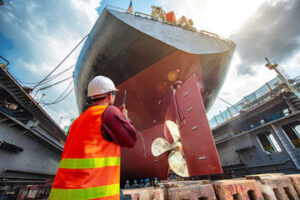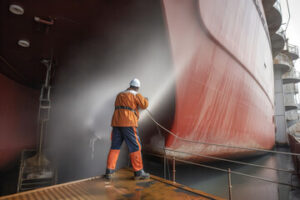What You Need to Know About Dock Building
Before starting your dock-building project, it is essential to find a location that allows you to anchor the structure securely, and where the water depth is appropriate.

Once the frame is set, it is time to install decking material. One popular trend is to incorporate seating into the design of your dock. For professional help, contact Lake Wylie Dock Builder.
The material that you choose to use when building your dock is one of the most important decisions you will make. Whether you are a homeowner who wants to create an oasis for relaxing, or a contractor constructing a commercial marina, choosing the right materials will ensure that your dock can stand up to both heavy use and harsh environmental conditions.
Wood is a popular choice for both frame and substructure components of docks, and it is available in a variety of visual finishes. Hardwoods such as teak and cedar are highly resistant to rot, decay, and insect infestation, making them an excellent choice for the moist and variable conditions of a lakeside environment. Ground contact pressure-treated pine is also a cost-effective and durable option, typically utilizing eco-friendly preservatives to provide added protection against moisture and fungal growth.
If you are looking for a more modern material, fiberglass composite pilings are a great choice. Engineered to never rust or corrode, they are an excellent choice for commercial and private docks that require low maintenance. These piles are also extremely strong and sturdy, making them ideal for areas where there is a high volume of boat traffic.
Another option is concrete, which is particularly well suited for building the foundation of a dock. When mixed with steel girders, it can be used to build structures that are exceptionally durable and stable, able to withstand the impact of boats passing through or over them. Concrete is also very affordable and easy to install, making it an excellent choice for budget-conscious homeowners who want to save on construction costs.
Plastic is a versatile material that can be used to create the decking of your dock. It is lightweight, durable, and offers an attractive appearance that blends well with the natural scenery. In addition, it does not splinter or crack, and is resistant to mold and mildew. Another benefit of plastic is that it does not leach chemicals into the water, which makes it an environmentally-friendly alternative to wood.
Lastly, aluminum is another very common and highly effective material for docks. This durable and weather-resistant material is a popular choice for residential and commercial docks, and it can withstand the high level of use that most docks experience on a daily basis.
Design
A dock is an excellent way to access the water, saving you from having to haul your kayaks or boats across the shore. But a dock can also be used for other purposes, including providing a place to perform water exercises and enjoy water sports. Choosing the right dock design depends on your specific needs. The design should be easy to work with, and it should be durable and weather-resistant. Moreover, it should be compatible with the environment around it. Incorporating utilities, such as power outlets and water stairs, is also a good idea. In addition, you should make sure the dock has enough space for boat mooring and should allow water to flow naturally underneath it.
Dock builders must choose a material to use for the structure and decking of the dock. There are several options available, including wood, steel and aluminum. Each has its advantages and disadvantages. Aluminum is durable and lightweight, making it a favorite among dock builders. However, it may rust over time. Wood, on the other hand, offers a natural aesthetic and is easy to work with. However, it requires regular maintenance, including staining and replacing rotted planks.
The best way to maximize the value of a dock is to design it according to its purpose. The most common uses of a dock include providing access to the water and anchoring boats. Docks can also be equipped with a variety of other utilities, such as benches, ladders and railings. These can be used to support different exercise routines, such as jogging or swimming. In addition, they can also help reduce the risk of injury by providing a safe location for exercising.
When designing a loading dock, it is important to keep in mind the most common freight types and sizes. This will ensure that the dock can handle the largest trucks and improve efficiency. The ideal loading dock design should be able to provide adequate staging space for freight and accommodate overhead cranes.
Prefabricated docks are often designed to minimize disruption of marine life and can be recycled at the end of their useful lives. Moreover, they can be customised to suit customer requirements. These features can help reduce the impact on the ecosystem and save money in the long run.
Installation
The installation of your dock can make all the difference between a well-made structure that will last for years to come and a sloppily built one that will collapse after just a few uses. Dock building is a large-scale project that requires specialized tools and knowledge. Hiring a professional is the best way to ensure that your new dock is up to code and able to meet your specific needs.
First, your dock builder will clear the area of debris and level it to prepare it for the foundation. They will then install the pilings that will hold the dock in place. You will need pilings that are tall enough to allow the dock to hover about 3-4 in (7.6-10.2 cm) above the water line (taking tides, flooding and rainfall into account).
After the dock is set in place, it’s time to add the decking. You can choose between a variety of different decking materials, but be sure that the material you select is durable and long-lasting. In addition, make sure that your decking is properly supported by using lag bolts to secure it in place.
Once the decking is in place, you can begin to install accessories and safety features. These can include cleats, bumpers and dock lights to extend the use of your dock into the evening hours. You may also want to consider incorporating a non-slip surface or handrails for added safety and functionality.
Once you’ve finished installing the decking, it’s time to install the frame and gangway. You will need to wait to install shoreline support posts until the frame is complete, as this will add stability and give you more accurate measurements for these additional posts. For added strength and durability, you can also add dock joists that run along the frame. These joists will increase the longevity of your dock and help it resist high winds and waves. Depending on your location and the type of shoreline and lake bottom, you may also need to add concrete or other forms of foundational supports.
Maintenance
Whether you have a new or old dock, the most important thing is to keep it clean and in good working condition. This requires regular inspections and maintenance. If you notice any signs of wear and tear, it is vital to address them as quickly as possible so that they don’t deteriorate further or cause safety hazards for those using the dock.
If your dock is made of wood, make sure to check for rotting boards and nail or screw protrusions on the surface. It’s also a good idea to regularly apply a wood sealant to prevent moisture from damaging the structure and to extend its lifespan. You should choose a sealant that is designed for use in marine environments, as some will require more frequent reapplication than others.
You should also inspect the pilings and support posts of your dock to ensure that they are stable and firmly anchored. Look for any signs of damage or shifting, and make sure that they are properly supported by concrete if necessary. You should also inspect the decking to see if there are any cracks or loose boards, and check for any splinters or other dangerous surfaces. You should also examine any electrical components to make sure that they are safe to use.
Aside from physical wear and tear, your dock may need other repairs or replacements due to environmental conditions or the actions of people using it. It is crucial to understand these factors and how they may affect your dock’s stability and durability before committing to a specific type or design.
Another area of your dock that needs regular attention is the hardware, which includes things like cleats and bumpers. These are essential for tying boats and other equipment to the dock, but they must be installed correctly in order to work properly. Make sure to test them out before putting them in use to make sure that they are functioning as intended and that they can support the weight of your boat and any other equipment that you plan to store on the dock.
